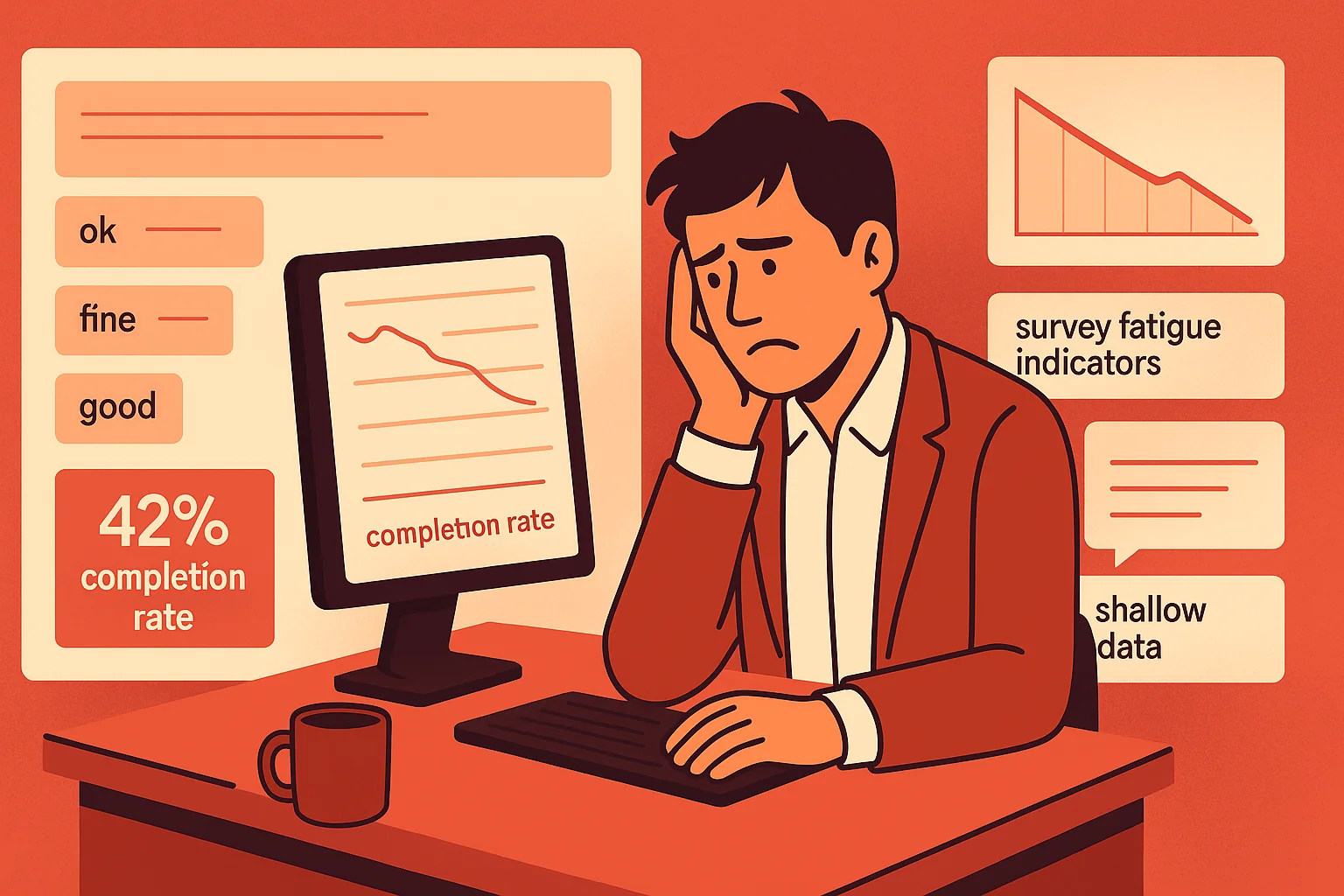The Survey Problem: Why Traditional Research Falls Short
Online surveys have dominated market research for decades. They're fast, cost-effective, and can reach thousands of respondents. But anyone who has analyzed survey data knows the frustration: results often lack depth and fail to capture the "why" behind consumer behavior.

The truth is, while surveys excel at collecting quantitative data, they struggle to provide the rich, contextual insights that drive real business decisions.
The 15-Second Problem
Research from Kantar reveals a sobering reality: respondents spend just 15 seconds on the average open-ended survey question and provide only five words as an answer. These brief responses are often generic throwaway comments like "it was ok" or "I liked it" – hardly the actionable insights businesses need.
Why Surveys Fall Short
1. Lack of Depth
Most respondents give minimal effort to open-ended questions. SurveyMonkey research shows that as survey length increases, the time spent per question decreases dramatically. Complex feelings, subtle preferences, and spontaneous ideas – the insights that often spark innovation – get lost.
2. No Follow-Up Capability
Traditional surveys can't ask "Why do you say that?" or "Can you elaborate?" in real time. When a respondent gives an unexpected or intriguing answer, there's no opportunity to probe deeper. The survey moves on by design, leaving potential insights untapped.
3. Survey Fatigue is Real
Survicate data shows completion rates drop significantly with each additional question:
- 1-3 questions: 83% completion rate
- 4-8 questions: 65% completion rate
- 9-14 questions: 56% completion rate
- 15+ questions: 42% completion rate
4. Response Quality Degrades
Research by Milieu Insight found that surveys longer than 10 minutes see:
- Doubled likelihood of random responses
- Increased gibberish answers in open-ended questions
- More "neutral" responses as attention wanes
- Sharp decline in respondent satisfaction
The Cost of Surface-Level Data
When surveys fail to capture depth, businesses make decisions based on incomplete information. You might learn that 60% of customers prefer Option A over Option B, but without understanding their reasoning, you can't:
- Identify what specifically drives that preference
- Uncover unexpected use cases or concerns
- Discover emotional drivers behind decisions
- Find opportunities for product improvements
The Need for Something Better
The limitations of traditional surveys have created a gap in market research. Businesses need insights that are both deep (like qualitative interviews) and scalable (like quantitative surveys). They need to understand not just what customers think, but why they think it.
This is where the future of customer research is heading – toward methods that can capture the nuance of human conversation while maintaining the reach and efficiency that modern businesses require.
In our next post, we'll explore how AI-powered interviews are solving these limitations and enabling qualitative research at quantitative scale.
